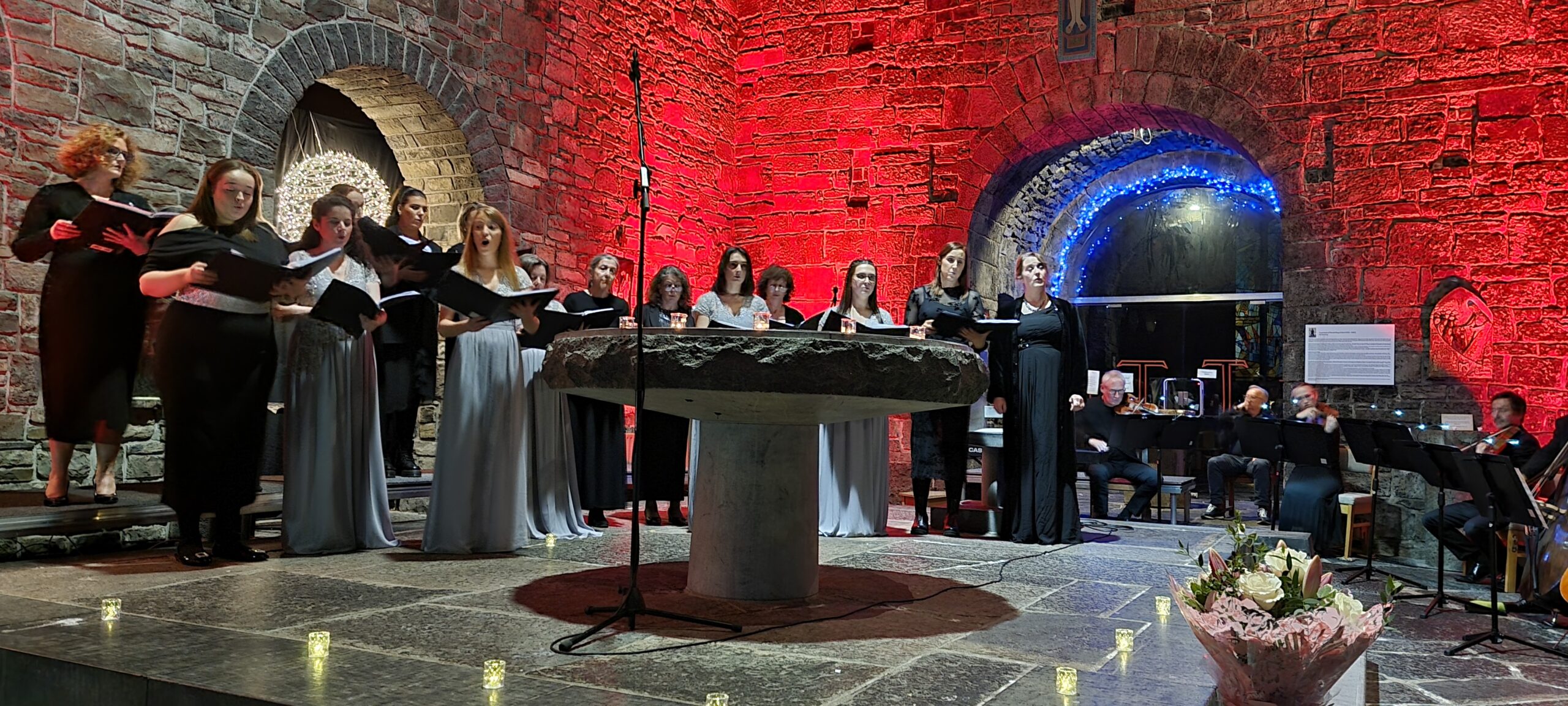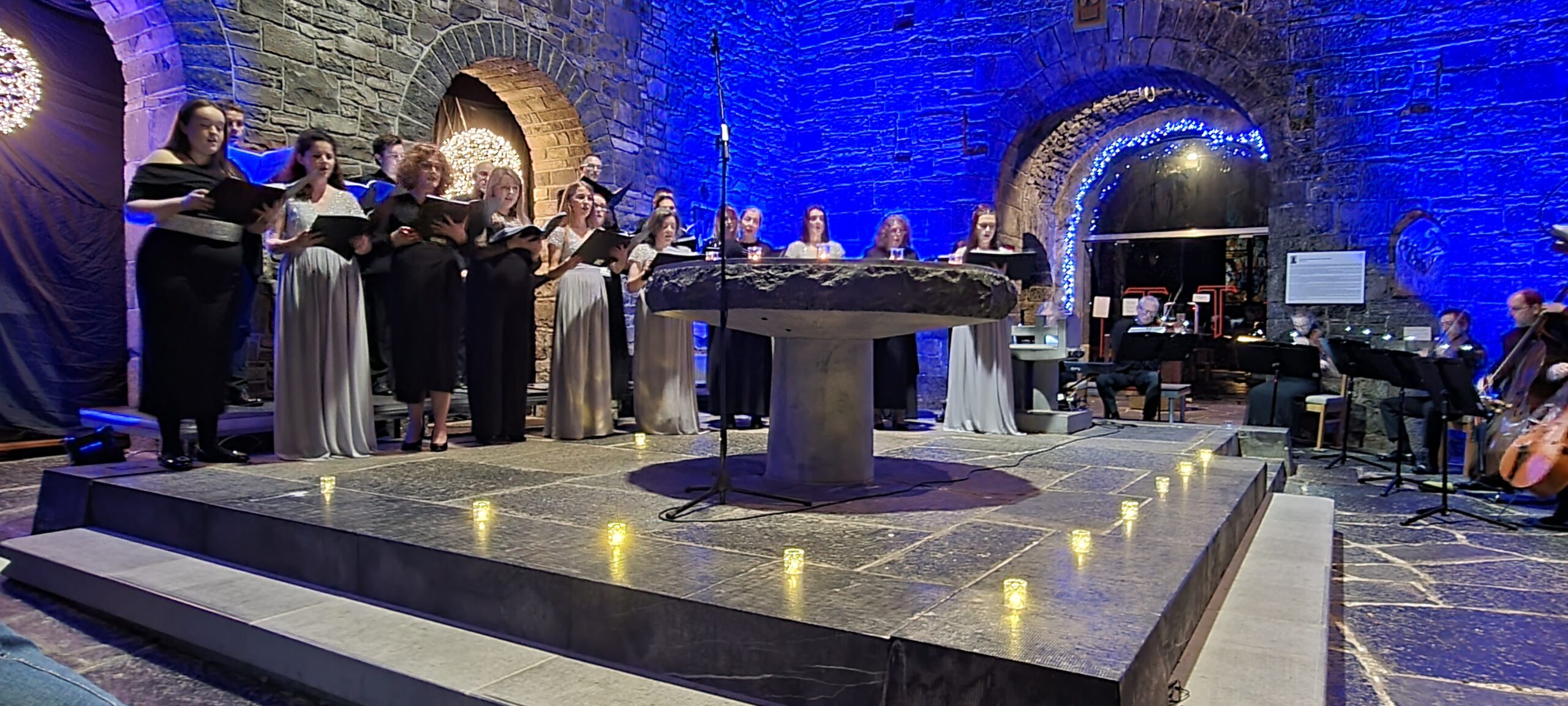Welcome / Fáilte Romhat!
The Franciscan Abbey in Multyfarnham was founded in 1268 and continues to be an active centre of Franciscan mission in Ireland. The only Franciscan Abbey in Ireland still standing on the footprint of its original foundation, the Franciscan fraternity continues its commitment of service from this special place.
Headlines
No Results Found
The page you requested could not be found. Try refining your search, or use the navigation above to locate the post.
Latest Updates
No Results Found
The page you requested could not be found. Try refining your search, or use the navigation above to locate the post.
News
Homily for Second Sunday of Easter – a forgiving and reconciling love
Jesus doesn’t “do” crowds. In the Gospels, when Jesus speaks, you get the impression that he sees each individual and cares for that person. He notices a woman who touches the hem of his garment; he stops to speak to a man up a tree; among all the noise he hears a...
Fr John Kealy OFM
A number of people have enquired about Fr John Kealy who had to spend a few days recently in Mullingar Regional Hospital. We're happy to report that John is making good progress and yesterday (Tuesday, 18/4), he moved to the Portiuncula Nursing Home, next door...
Fr Kieran’s homily at the Easter Vigil Mass
Jock Dalrymple was a Scottish priest and spiritual writer. In one of his books he refers to a type of believer who sees religious practice as a fire insurance against eternity. It is safer to keep God happy by keeping his will and avoiding the fires of Hell. But it...
Homily from Fr Kieran at the Celebration of the Lord’s Passion – Good Friday
The Scriptures for Good Friday present us with two Passion accounts, that of the suffering servant from the prophet Isaiah and the main focus of today’s liturgy, the Passion of Jesus. Central to the meaning of each account is the issue of atonement. Isaiah proclaims,...
Lent – a time of personal retreat
At Mass on Ash Wednesday I suggested to the congregation in Multy and to those joining on webcam that we might regard the season of Lent as a time of personal and communal retreat. Later that morning I was in the Mercy Convent in Longford celebrating Mass for the...
From the desk of Fr Kieran OFM
Beware of the Blame Game
Fr Kieran reflects on the Gospel of the 28th Sunday of the Year (Matt 22:1-14), about the invitation from the King to the Wedding Feast for his son. This is one of the passages from the Gospels that have been ‘used’ from time to time to target the Jewish people. However, Kieran challenges such an interpretation.
At the time of writing, the Israel – Hamas war is happening, taking place following the horrific attacks by Hamas on innocent Israeli citizens, enjoying themselves or just going about their business, and murdering over one thousand of them.
And Israel’s government and military are retaliating with massive force and in the process, killing thousands of civilians – men, women, and children. And so the blame game begins, in the media, on the streets, in parliaments.
Kieran challenges this instant blame game that emerges from equating the word, “some” with the word, “all.”
“What do you do?”
What’s in a question? A chance encounter in the cark park at the friary and an unexpected question asked of Fr Kieran is the context for his sharing this week. In a place where there is so much history and so much beauty to be seen whether within the church building itself or in the grounds of the friary, most of the friers are well-versed enough to tell people about the ‘place’ when asked and indeed, they are asked this frequently. However, last Sunday, the question asked of Kieran was to enquire of what Franciscans in Multyfarnham ‘do’ – what is Franciscan life?
Buildings, gardens, decoration, surroundings – all of these are the canvas for the picture of life that is led in Multyfarnham but what is it that gives the picture its life? It is, of course, the friars and here in his reflection this week, Kieran opens the door, inviting us in as he answers the question put to him in the car park.
A thank you, perhaps, to the anonymous woman whose question lies at the source of Kieran’s words!
Transfiguration – God’s divinity and its connection with His humanity
In his reflection this week, which was also his homily last Sunday, Fr Kieran invites us to think about the duality of Jesus, His humanity, and His divinity, and consider how the Transfiguration that we have just celebrated, fits in our understanding of Jesus as God and man.
For the Jewish people at the time of Jesus, the “scandal” was not the death of Jesus on the Cross – after all, the sight of criminals condemned to an horrific death on a cross was not an uncommon sight. However, to speak of resurrection, not at the end of time, (or for some, at all) was a concept for very many that might be considered scandalous.
Kieran weaves these two aspects of Jesus, His humanity and His divinity, and leads us to see this feast of the Transfiguration – Jesus in his divine state – as intrinsically linked with the human Jesus, whose death on the cross, a death that brought with it indescribable suffering and horror, as the divine expression of His love for us.
An Evening of Beautiful Music in the Friary
Some buildings lend themselves, naturally, to having good acoustics and the Friary church can count itself among those. And when music is played and sung here, the tones of the voices and of the played music combine with the very stones themselves to deliver a sound that cannot be replicated in any other place. In every sense, it is a unique experience, both for the artists and for their audience.

And so it was last Sunday evening when The Lynn Singers from Mullingar, the Irish Concert Orchestra Quintet, and Vocative, a small six-man group of singers visited us to perform their Winter Concert. An audience of just over 300 people were treated to a beautiful evening of perfect singing, and magnificent and uplifting music. The first half of the evening was given over to The Lynn Singers, Vocative and the ICO Quintet performing “Magnificat” from St Luke’s Gospel (LK 1:46-55). Few of us can say that we have not heard the amazing words of Mary’s prayerful response to the Angel sung. However, Sunday’s performance was one with which few would be familiar. In an arrangement by Kim André Arnesen, a young Norwegian classical composer from Trondheim in that country, the performance of “Magnificat” was quite simply, beautiful. How such a sound could be obtained from so few voices is a mystery and the individual performances were so perfect, that the soprano voices were like the voices of angels filling the Friary church. This arrangement was sung in Latin and while this might, at first, risk disconnecting the audience from the magnificence of the words, having the Latin and English, side-by-side on the back page of the accompanying programme, allowed us to engage with the prayer. A spectacular performance, with Musical Director, Dervilla Conlon skillfully encouraging every note and pause to deliver an impeccable performance.
This was followed by the ICO Quintet with a performance of three pieces, two by Arthur Duff (“Windy Gap” and, “Meath Pastoral”) before concluding with McAnanty’s Reel. Kenneth Rice led the quintet in a spirited uplifting, toe-tapping, rendition of this well-known reel and at times, it seemed that Robin Panter on Viola was going to step forward, put his viola down, and break into the reel itself. Joyful!

The evening concluded with three songs, again from the The Lynn Singers, with Vocative and the ICO. First, we had Moonset, by Don McDonald, a thoughtful piece, followed by Blackbird, a Lennon and McCartney icon to an arrangement by Kenneth Rice of the ICO Quintet, and the evening finished with a song that seldom fails to bring to mind old friends, the Parting Glass, again to a Kenneth Rice arrangement with Audrey Snyder.
Evenings such as this are as rare as they are special, and it will take a few weeks for the last echoes of music from the evening to fade away. It is evenings such as this that remind us of why the Friary church in Multyfarnham has a special place in the hearts of all of us.
T. Gerard Bennett
